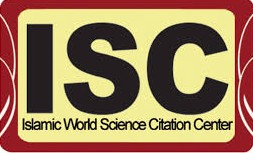The crime of ethnic cleansing under international criminal law
DOI:
https://doi.org/10.35246/jols.v36i3.495Keywords:
ethnic cleansing, genocide, forced deportationAbstract
Ethnic cleansing is the systematic forcible removal of ethnic and religious groups from a specific area, with the intent of making the area ethnically homogeneous. Direct deportation is accompanied by genocide, rape, and destruction of property, so the crime of ethnic cleansing can be considered a crime against humanity and can be included in the Genocide Convention.
Ethnic extremism is a concept linked to the use of violence and weapons by a strong party against a weaker party. Extremism and fanaticism are often behind such a crime with the aim of obliterating or concealing the oppressed group in a particular geographical area.
Downloads
References
المصادر Sources
أولاً: الكتب
I. فتوح عبد الله الشاذلي. القانون الدولي الجنائي، الطبعة الثانية، 2016.
II. محمد عادل محمد سعيد. التطهير العرقي – دراسة في القانون الدولي العام والقانون الجنائي المقارن، دار الجامعة الجديدة، الازاريطة، 2009.
ثانياً: الرسائل والاطاريح
أ) الرسائل
I. خلف الله صبرينه. جرائم الحرب أمام المحاكم الدولية الجنائية، رسالة ماجستير، كلية الحقوق والعلوم السياسية – جامعة منتوري، 2006 – 2007.
ب) الاطاريح
II. بشار رشيد. المسؤولية الجنائية الدولية على الجرائم ضد السلام وأمن الإنسانية، أطروحة دكتوراه، جامعة أبو بكر بلقايد – تلمسان، 2018 – 2019
III. نبراس إبراهيم مسلم. المسؤولية عن الحماية في القانون الدولي، أطروحة دكتوراه مقدمة إلى مجلس كلية الحقوق – جامعة النهرين، 2015.
ثالثاً: البحوث
I. صفوان مقصود خليل. الطبيعة القانونية للعناصر المكونة للجريمة الدولية، بحث منشور في مجلة الشارقة (مجلة دورية محكمة)، المجلد (11)، العدد (1)، دبي – الامارات العربية المتحدة، 2014.
II. عدي طلفاح محمد خضر. الجريمة الدولية صورها واركانها، بحث منشور في مجلة تكريت للعلوم الانسانية المجلد (14)، العدد (10)، تشرين الثاني، 2007.
III. محمد الصالح روان. الجريمة الدولية في القانون الدولي الجنائي، بحث منشور، مجلة كلية العلوم الإسلامية، الصراط، السنة الرابعة، العدد الثامن، 2004.
رابعاً: الاتفاقيات الدولية:
I. نظام روما الأساسي للمحكمة الجنائية الدولية.
خامساً: المصادر الأجنبية:
I. Arshdeep Ghuman. Element of crime, Rajiv Gandhi – University of Law, Patiala, Punjab, volume 1, issue 4, 2018
II. Clotilde Pégorier. The legal Qnalification of ethinc cleansing, University of Exeter as a thesis for the degree of Doctor of Philosophy, 2010
III. Drazen Petrovic. Ethinc Cleansing, An Attempt at Methodology, 1994
IV. Émile Ouédraogo. Génocide et nettoyage ethnique: quelle différence en droit international pénal?, 2014
V. H. ZEYNEP BULUTGIL. The Roots of ethnic cleansing in Europe, Tufts University – Massacbusetts
VI. Micol Sirkin. Expanding the crime of genocide to include Ethnic cleansing: A return to established principles in light of contemporary interpretations, Seattle University Law Review, Vol: 33:2, 2010
VII. Muhidin Mulalic. Ethinc Cleansing, Genocid and Demographic Changes in Bosnia and Herzegovina, Journal of Balkan and Black Sea Studies, Year 2, Issue 2, June 2019
VIII. International Convention on the Elimination of All forms of Racial Discrimination, 1965.
IX. Ethnic Cleansing,
مقال متوفر على الموقع الإلكتروني
https://en.m.org/wiki/Ethnic_cleansing
X. Homicide,
مقال متوفر على الموقع الإلكتروني
https://www.britannica.com/topic/homicide
XI. The Elements of a crime: Definition & Overview,
مقال متوفر على الموقع الإلكتروني
https://study.com/academy/lesson/the-elements-of-a-crime-definition-lesson.html
Downloads
Published
Issue
Section
License

This work is licensed under a Creative Commons Attribution 4.0 International License.
Copyright and Licensing:
For all articles published in Journal of Legal Sciences, copyright is retained by the authors. Articles are licensed under an open access Creative Commons CC BY 4.0 license, meaning that anyone may download and read the paper for free. In addition, the article may be reused and quoted provided that the original published version is cited. These conditions allow for maximum use and exposure of the work.
Reproducing Published Material from other Publishers: It is absolutely essential that authors obtain permission to reproduce any published material (figures, schemes, tables or any extract of a text) which does not fall into the public domain, or for which they do not hold the copyright. Permission should be requested by the authors from the copyrightholder (usually the Publisher, please refer to the imprint of the individual publications to identify the copyrightholder).
Permission is required for: Your own works published by other Publishers and for which you did not retain copyright.
Substantial extracts from anyones' works or a series of works.
Use of Tables, Graphs, Charts, Schemes and Artworks if they are unaltered or slightly modified.
Photographs for which you do not hold copyright.
Permission is not required for: Reconstruction of your own table with data already published elsewhere. Please notice that in this case you must cite the source of the data in the form of either "Data from..." or "Adapted from...".
Reasonably short quotes are considered fair use and therefore do not require permission.
Graphs, Charts, Schemes and Artworks that are completely redrawn by the authors and significantly changed beyond recognition do not require permission.
Obtaining Permission
In order to avoid unnecessary delays in the publication process, you should start obtaining permissions as early as possible. If in any doubt about the copyright, apply for permission. Journal of Legal Sciences cannot publish material from other publications without permission.
The copyright holder may give you instructions on the form of acknowledgement to be followed; otherwise follow the style: "Reproduced with permission from [author], [book/journal title]; published by [publisher], [year].' at the end of the caption of the Table, Figure or Scheme.











